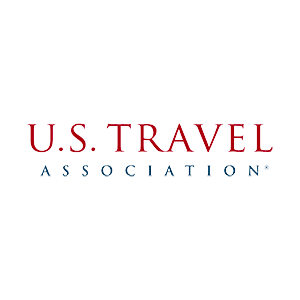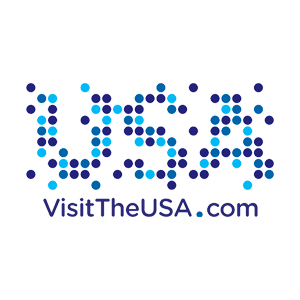Wildland Fire + Smoke:
Strategy, Resources and Guidelines
To help our partners communicate accurate and relevant information, we're sharing our wildland communication strategy and resources that Western Montana's Glacier Country and our partners have drafted and compiled over the past several years.
Our wildland fire and smoke communications/messaging plan is broken into three categories: preventive, during and recovery. The focus of this is how we respond to the impact it has on our visitors. We have created strategy and efforts for each, and tools for you to use:
Preventive.
1. Share with industry partners resources available so they are aware before an emergency occurs.
2. Share with consumers how they can have a safe and fun trip around Western Montana.
3. Remind them there are things they can do to prevent a wildland fire and that fires will likely not impact their trip if they are diligent in following the rules.
During.
Direct consumers toward available partner resources for information. We don’t want to have a "Western Montana is closed" message. We will provide relevant content and resources through communication with DMO partner-owned channels including information on open areas and activity options for visitors to enjoy.
Recovery.
Promote communities impacted by fires, communicating that they are open for business, and share current photos to promote visitation. Industry communications outreach will point partners to this page where businesses can access our fire/smoke toolkit—giving our partners access to the resources and information they need to share with visitors and locals. We will share the toolkit in all partner newsletters, on partner webpages and via a digital campaign aimed at preparing our communities BEFORE a fire/smoke event occurs.
Communication Guidelines for Wildland Fire Updates
Western Montana's Glacier Country and our partners have drafted language over the past several years to help avoid cancellations of future reservations and to help visitors enjoy their visit if a wildland fire causes temporary closures or smoke conditions in the Glacier Country region. Prior to any potential crisis, it is always good to review protocols should a fire begin to impact our visitors. (Download as a PDF)
We have also created a free Don’t Add Fuel to the Fire 30-minute course designed for Western Montana businesses and front end staff who may receive questions about wildland fire and smoke conditions.
Messaging:
Here are a few things to keep in mind when talking with people.
- “You’re safe.” Most wildland fires, when they happen, are in the backcountry, miles from civilization and any structures. Montana is home to 3,443,038 acres of wilderness, and most fires happen there. If, by chance, a wildland fire gets close to a community, our firefighting experts communicate, evacuate and communicate some more. You will not find yourself unwittingly in the midst of a wildland fire while driving down the highway. Ever. Public safety is always the first concern. If an area is open, it is safe.
- Montana is huge. Vast, in fact. Over 145,556 square miles or 94,109,440 acres, to be precise. If you read that a fire is 6,400 acres, keep it in perspective, as that’s only a tiny, tiny fraction of Montana’s total acreage. Sometimes newspaper headlines and social media posts can be unnecessarily dramatic and imply that Montana as a whole is “on fire.” It “sounds better” than to say .000068 of Montana is on fire, which is actually more accurate.
- Fire is a natural part of our region’s ecology. Most fires are started by lightning and are responsible for maintaining the health and perpetuity of certain fire-dependent ecosystems. We don’t pretend to be scientists, but we do have a lot of scientists in our area and resources in our partners at the state and federal levels, and we’ve attached a link to fire ecology below.
- When communicating about wildland fire and smoke conditions in the region, it is vital that we all do our part to send positive, factual, reassuring and helpful messaging. A disruptive or dramatic response can have widespread, lasting effects. When travelers change plans needlessly, their visitor experience isn’t the only thing that suffers—the effects can be detrimental to Montana’s tourism and main-street small-business economy.
- And, because we always think the glass is at least half full here in Glacier Country, when the sky is a bit smoky, share with visitors how truly phenomenal sunsets are. And, morel mushrooms—the caviar of the mushroom family—like to grow in post-fire areas. We like that.
Provide specific information, for example…
“The majority of Glacier National Park is open. Open areas include Apgar, Fish Creek, Two Medicine, St. Mary, and the North Fork.”
Give perspective on what is open:
“Glacier National Park is over a million acres.” Use percentages like “2,500 acres—or less than 3% of Glacier National Park—are currently burning, while approximately 25% of the park is temporary closed for wildland fire management.”
“29.5 miles of the Going-to-the-Sun Road are currently closed between the foot of Lake McDonald (near Apgar) and Logan Pass.”
“18.5 miles of the Going-to-the-Sun Road are open from St. Mary to Logan Pass on the east side.”
Historically, many wildland fires have been human-caused, so reminders for guests to practice fire safety are important. Even more so in the time of a pandemic. While recreating, people are encouraged to:
- Stay on designated roads and avoid parking on dry brush or grass, as exhaust pipes and vehicle undercarriages can be very hot and easily start a wildland fire.
- Campers are reminded to never leave a campfire unattended, and make sure fires are completely extinguished before leaving the site.
- Extinguish and properly dispose of cigarette butts. Do not throw them out the window!
- Know and follow Montana State Fire Restrictions.

Resources:
Here are some links that will help you stay informed in case there are wildland fires and smoke in Western Montana and help your visitors make informed travel decisions. Check back often, as these sites are updated daily, sometimes hourly.
- Recreate Responsibly in Western Montana, Prevent Wildland Fires: https://glaciermt.com/recreate-responsibly
- Glacier Country Wildland Fire Updates for Travelers: https://blog.glaciermt.com/western-montana-wildland-fire-update/
- Montana.gov official state website on Fire Information for Travelers: https://mt.gov/fire.aspx
- Montana Department of Environmental Quality wildfire smoke and air quality information site: deq.mt.gov/air/Programs/smokeforecasts
- Montana Department of Natural Resources & Conservation interactive wildland fire map: gis.dnrc.mt.gov/apps/firemap
- Montana Wildland Fire Restriction Info: www.mtfireinfo.org/
- Frequent updates on fires/closures: inciweb.nwcg.gov/accessible-view
- Lincoln County Fire Safety Info: ww.fireadaptedkootenai.org/
- Posting of fishing, camping and other recreation restrictions due to drought and fire: https://fwp.mt.gov/news/restrictions-and-closures
- Communication guidelines for wildland fire updates: http://admin.glaciermt.com/wp-content/uploads/2024/06/Wildland-Fire-Dos-and-Donts-2024.pdf
Glacier National Park – @GlacierNPS and facebook.com/GlacierNPS.
We also have many webcams set up across Western Montana so we can see Glacier Country in real time and if there's smoke in the area.
Here are a few:
- Montana Department of Transportation
- Glacier National Park
- Woods Bay in Bigfork (Flathead Lake)
- Whitefish Mountain Resort
And, although I think we'd all agree we'd rather not have to deal with smoke, it’s not calamitous, and, if one area is smoky, there are always many, many places in Western Montana, and the state in general, that aren't.
If your visitors must revise their travel plans in Western Montana because of wildland fires or smoke, Western Montana's Glacier Country’s call center can help. Chat online here or call 800.338.5072.










